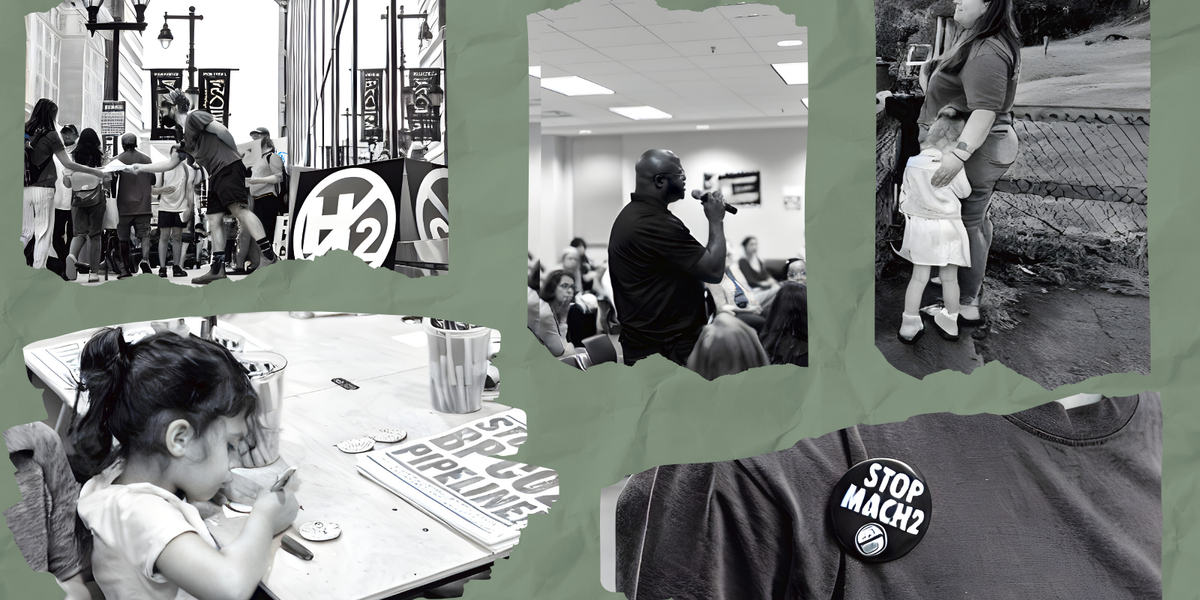toxic emissions
Biden’s push for plastic as a coal replacement sparks environmental backlash
A Pennsylvania company’s plan to turn plastic waste into fuel for steelmaking, backed by a $182.6 million federal loan guarantee, is drawing sharp criticism from environmentalists who say the project is anything but green.
In short:
- The U.S. Department of Energy is funding a project to replace coal with plastic waste in steel production, claiming it will reduce greenhouse gas emissions.
- Environmental groups argue that burning plastic is not a viable climate solution and could worsen air pollution in disadvantaged communities.
- The Energy Department’s decision is under scrutiny as critics push for investment in cleaner, proven technologies like hydrogen.
Key quote:
“There are no steel mills in the United States that burn plastic. No one has any idea what the emissions profile of burning plastic will be.”
— Jane Williams, chair of Sierra Club’s national clean air team
Why this matters:
Burning plastic as fuel could introduce new toxic emissions, raising health concerns in communities already burdened by pollution, while potentially delaying the transition to truly clean energy alternatives. Read more: Every stage of plastic production and use is harming human health.
| BigStock Photo ID: 446368907 |
| Copyright: JStuij |
EPA okays Chemours request to export GenX from the Netherlands to Fayetteville Works plant
Chemours Fayetteville Works plant okayed to import up to 4 million pounds of the toxic chemical GenX from the company’s Netherlands facility.
Mia DiFelice, Robin Lesko: New Pennsylvania Shell plant brings pollution and plastic. We’re fighting back.
Shell’s plant is spewing air pollution and blowing past permit limits in Western Pennsylvania, so we're pushing to hold it accountable.
‘It’s just too close’: People living near fracking suffer as Pa. and local governments fail to buffer homes
A Pennsylvania bill that would limit fracking near homes and schools was shelved this summer right before a scheduled committee vote. In a small town in shale country, accounts of misery and discord show the stakes.
Oil lobby pressure dooms bill aimed at curbing California refinery pollution
The Mercury News reporter Will McCarthy writes about a stalled California State Senate bill that would have tripled the fines paid by refineries for emitting toxic pollutants.
In a nutshell:
The bill, AB 1465, sponsored by Assemblymember Buffy Wicks (D-Oakland), was postponed until 2024 at the request of Wicks herself. The delay was prompted by the need for additional time to negotiate with various stakeholders, including the Bay Area Air Quality Management District and opposition groups, particularly the Western States Petroleum Association. McCarthy notes that the lobbying group has spent millions trying to influence policy decisions in recent years.The bill's fate remains uncertain, but it may resurface in the next legislative session.
Key quote:
“Once again, it’s business as usual — refineries will continue to pollute at a discount rate,” said Heidi Taylor, a member of Healthy Martinez, a local activist group that formed in the wake of a toxic release from a nearby refinery on Thanksgiving Day in 2022. “It’s disgusting. We shouldn’t have to wait for clean air and water.”
The big picture:
On the health front, exposure to toxic emissions from refineries can lead to respiratory problems, including asthma and lung irritation, as well as increased risks of cancer and other serious illnesses. Moreover, communities near refineries often bear the brunt of these health impacts.
From an environmental perspective, refinery pollution contributes to air and water contamination. Harmful chemicals released into the atmosphere can harm ecosystems, damage vegetation and contribute to the formation of smog and ozone pollution. Water pollution can occur through leaks, spills or runoff, affecting aquatic life and water quality. Altogether, refinery pollution underscores the importance of stringent regulations and monitoring to safeguard public health and the environment.
Read the article at The Mercury News.
Low-income residents in North Richmond, Calif., like similar communities around the country, pay the price in health living next to oil industry facilities, wrote Jane Kay and Cheryl Katz in 2012 for EHN's award-winning special report Pollution, Poverty and People of Color. Has much changed since then?
| BigStock Photo ID: 474182609 |
| Copyright: Kriengsak-Stock |
Inside Indiana's “advanced” plastics recycling plant: dangerous vapors, oil spills and life-threatening fires
The Brightmark “plastics renewal” plant can’t get past the start-up phase, as former employees raise environmental, health and safety concerns.
| BigStock Photo ID: 475376677 |
| Copyright: micklo |
Satellites, drones join fight against air pollution in Pennsylvania
In the summer of 2021, a twin-engine special research aircraft took off from State College, PA., on a mission to pinpoint sources of high levels of methane gas, or “super emitters." Environmentalists are employing high-tech tools in a concerted effort to hold industry accountable, Ad Crable writes for the Bay Journal.
In a nutshell:
The Pennsylvania Department of Environmental Protection, in collaboration with Carbon Mapper and myriad partners, communities and groups, is contributing to a worldwide effort to monitor methane emissions via satellites, air-based sensors and boots on the ground. Phase one is backed by a $100 million
Key quote:
"“It’s not our parents’ or grandparents’ environmentalism. It’s definitely not just sitting in trees. It’s a different type of environmentalism and it’s much more sophisticated,” said Justin Wasser of Earthworks.
Big picture:
Methane satellites, due to begin launching later this year, and their expected trove of data is expected to spotlight the global impact of the problem. Activist groups, outgunned by industry for years, say that although they are much better equipped to identify and monitor violators and scofflaws, the political will needed to bring about meaningful policy change is still lacking, as is enforcement.
You can read veteran journalist Ad Crable's story here.
For more on the risks of living near fracking wells check out our series: Fractured: The body burden of living near fracking



















